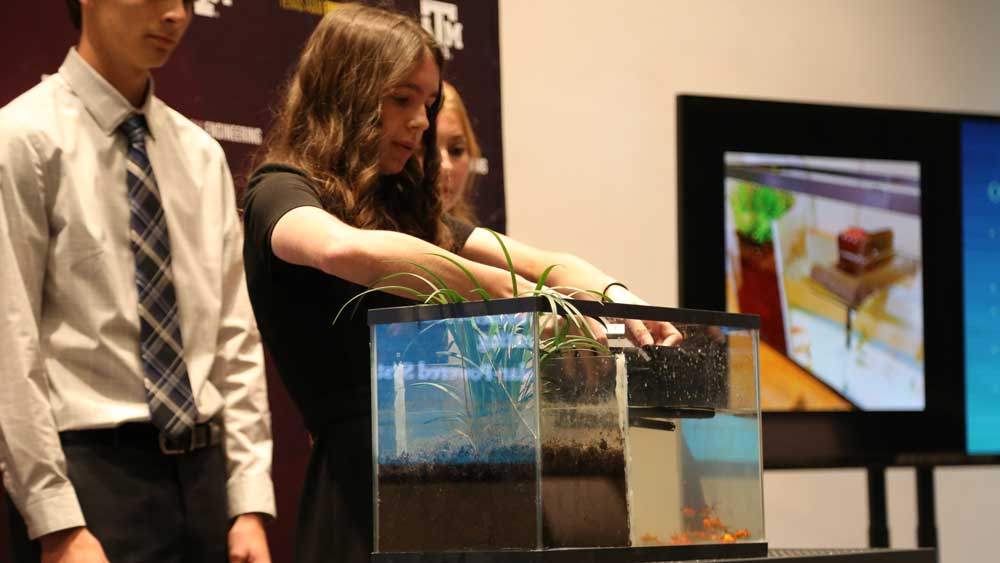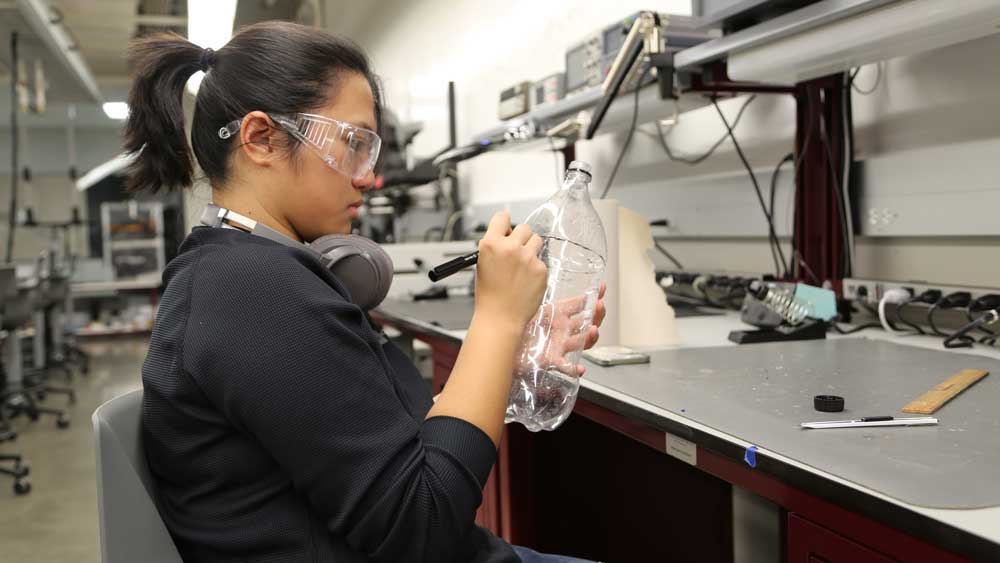
In February, nearly 350 innovative students from 24 universities around the world participated in the first part of Texas A&M University's Invent for the Planet (IFTP) competition, a 48-hour design challenge to solve some of the world’s most pressing issues.
Following the first round of the competition, six teams have advanced to the IFTP finals, where they will travel to College Station, Texas, to pitch their impactful designs during a livestream on April 20 at 10 a.m. The first-place team will win $5,000, the second-place team will win $3,000, and the third-place team will win $2,000.
Finalists will also participate in an open showcase to the public on April 19, from 10 a.m. to noon, in the Zachry Engineering Education Complex’s second-floor atrium, near Starbucks. All are invited to visit with the teams, learn more about their innovations and ultimately vote for a crowd-favorite team, which will receive a $1,000 award.
Team DisPlace from Texas A&M developed a modular transportable housing design that can grow amid unpredictable situations after a natural disaster. The team noted that physical rehabilitation is a common goal for other temporary housing solutions for natural disasters. However, these solutions tend to ignore the need for mental rehabilitation after experiencing a traumatic event, such as a natural disaster, and being in an unusual arrangement, such as temporary housing. The team’s focus was to provide immediate disaster relief that prioritizes mental well-being and rehabilitation.
Team TF-575 from New Mexico State University developed an inexpensive, low-maintenance balloon-actualized mesh network (B.A.M.N.). B.A.M.N. is a communication system for buildings that were built to not be harmed by natural disasters such as fire and police departments, public schools and libraries. Often, communication infrastructure is destroyed during disasters; therefore, the device is meant to be easily deployed to ensure communication with family, first responders and friends.
Team Disasterisk Spot from Mahidol University in Thailand developed Disasterlink, a hotspot-like device for emergency communication without infrastructure (meaning it can manage its network independently). The team came together to develop a solution that addresses the issue of communication breakdowns in the aftermath of life-threatening disasters. Damage to communication infrastructure caused by natural disasters such as earthquakes can delay the search-and-rescue process and make it more extensive than it already is. Team Disasterisk stresses the importance of having emergency communication plans ready. With Disasterlink, victims of life-threatening disasters can connect to Wi-Fi immediately through their devices.
Team Eco-Energizers from Texas A&M University at Qatar developed an innovative solution to address the issue of micro-cracks in solar panels. Micro-cracks are tiny defects that can occur in solar panels due to external stresses, such as temperature changes or physical impacts. Over time, these micro-cracks can cause solar panels to degrade, reducing their efficiency and lifespan. The team's solution, SolarPath, is a self-healing technology that utilizes high-impact concentrators to repair any micro-cracks that are found in solar panels. These concentrators redirect light to the micro-cracked area, which triggers a photothermal reaction that repairs the defect. This process is repeated every day, allowing SolarPath to continuously heal any new micro-cracks that occur in the solar panel.
Team FinDiesel from Habib University in Pakistan addresses the issue of waste management in the fishing industry. The team has employed blue bio-economy strategies to harvest fish waste, such as fish scales, fish heads and fish bones, and convert them into biofuel. The biofuel produced by FinDiesel can be used as a source of energy for local communities, which can help reduce their dependence on fossil fuels and promote sustainable development. In addition, the recycling of fish waste to create biofuel helps to address the problem of waste management in the fishing industry, which can have negative environmental impacts if not managed properly.
Finally, Team H2Grow from Swansea University in Wales is tackling the sanitization of contaminated water with their innovation, a multi-way filtration system that relies on reverse osmosis technology to clean contaminated water and make it usable. Reverse osmosis is a process that involves applying pressure to force water molecules through a semi-permeable membrane, which filters out impurities and contaminants such as bacteria, viruses and dissolved minerals. The process is highly effective in removing contaminants from water and is widely used in water treatment plants.
The public is invited and encouraged to attend the finalist showcase on Wednesday, April 19, and help choose the crowd favorite. The IFTP finals will be streamed live on YouTube on Thursday, April 20, from 10 a.m.-noon. For more information, visit the Invent for the Planet webpage.